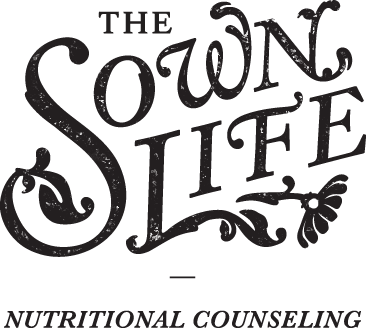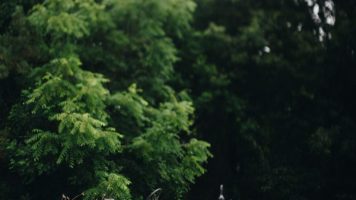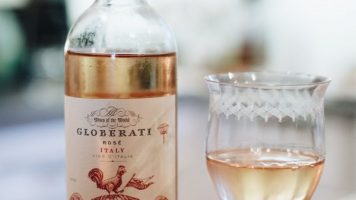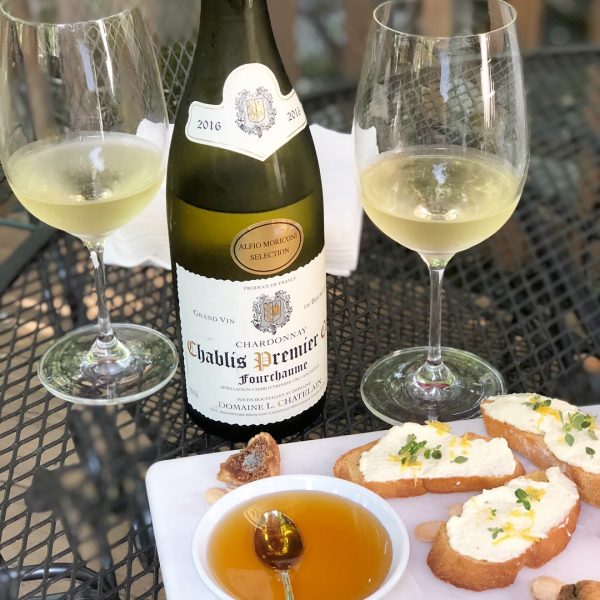I’m so excited and honored to be guest posting for The Sown Life Wellness. Between the two of us, there is a lot of passion for food, wine, wellness, hospitality and self-care. After working together for a little bit, it became clear that a collaboration was just a matter of time. One of Susan’s core values, that food is worth doing well, carries with it an attitude about what we eat and drink that is at the same time discerning and down to earth. I want to talk with you first about how this philosophy towards food applies to wine as well and share a little bit of what strikes my interest in wine.
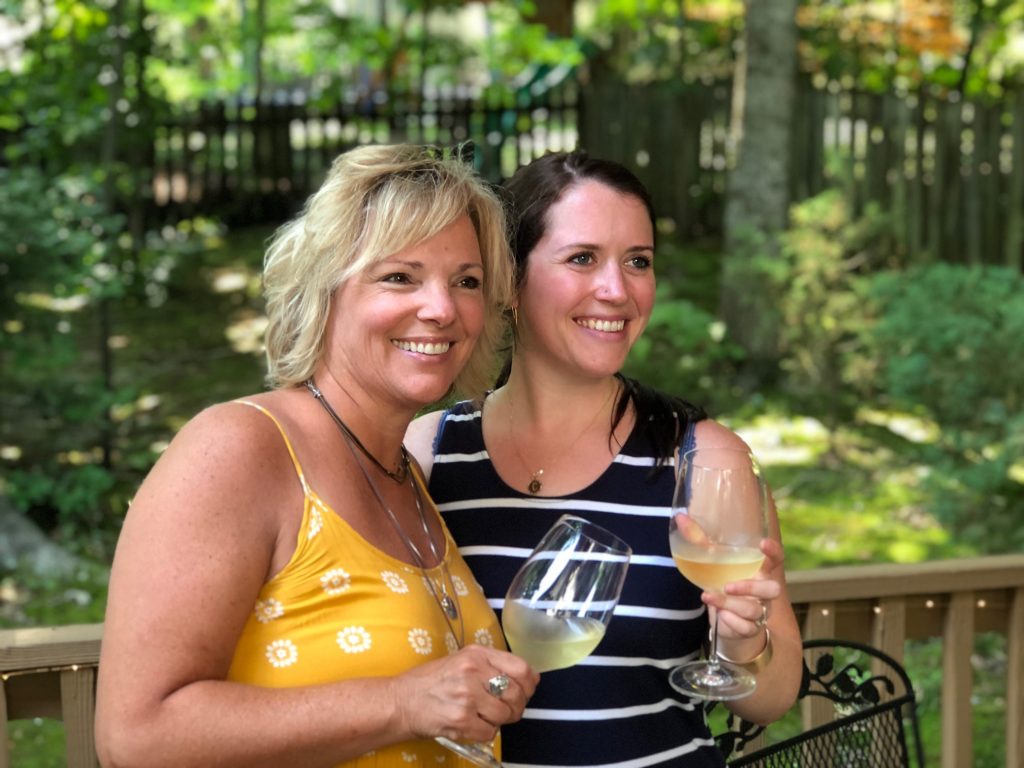
Much like food, good wine is worth finding; but its a subject often clouded in mystery and pretentious attitudes. Drinking wine can be an authentic and simply enjoyable experience. However, wine is also incredibly complex, with layers of thought and ideas surrounding it. I started @mommyneedssomewine on Instagram to document my own journey as I learn more about a subject that I am truly passionate about. I think that wine has the unique ability to bring people together. I cannot tell you how many good, healing, celebratory and memorable moments I’ve shared with someone over a glass (or two) of wine.
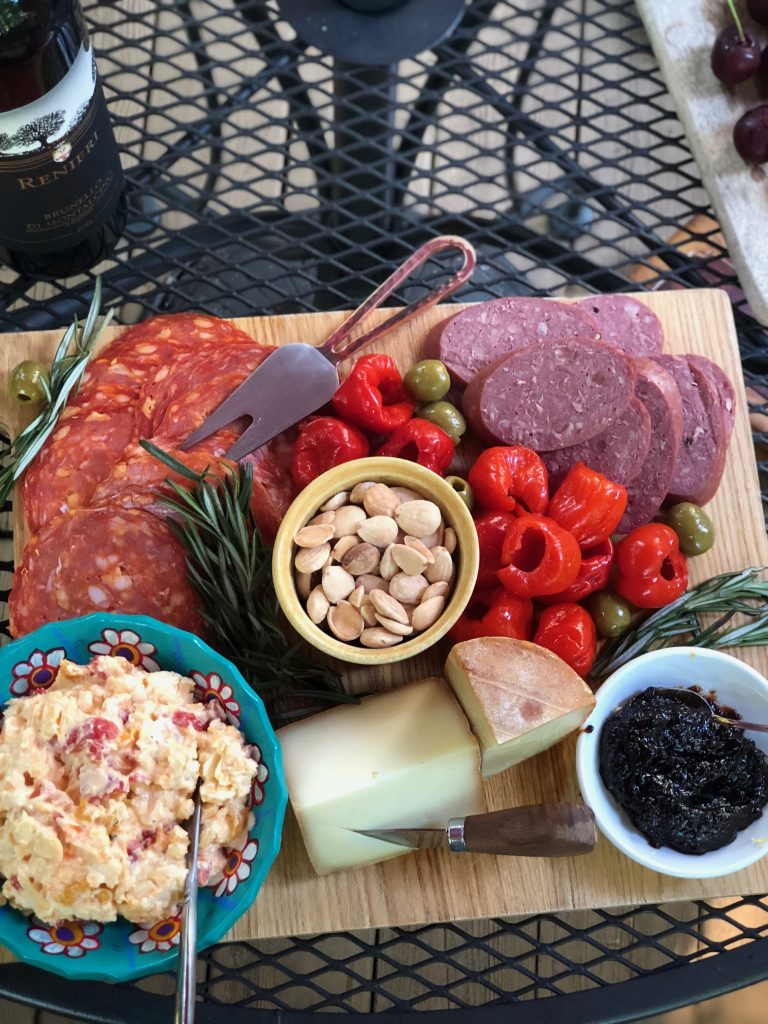
Allow me to share with you a couple things that first got me interested in wine. The first is that wine is living; it is always changing. In the vineyard, the grapes are growing and coming to fruition and ripeness. A lot of the flavor imparted to the wine happens in the vineyard. While there are places that produce consistently good wine, you will never get the exact same growing season replicated. Once in the bottle, the wine ages as the years go by. When you open and finish a bottle, you essentially stop the aging process in its tracks. You can never get it back in the exact same way, you will never know what that wine may have tasted like had you waited longer to drink it. Wine is transient; temporary. Which makes the moment you share it and who you share it with that much more valuable. It’s such a mirror of our lives, things are changing constantly around us, we are changing. Wine, when taken in good company, makes us stop and think about this moment right here, enjoy it, and then let it go. For me, that is powerful. I could talk about this a lot more but suffice it to say this, to me, is a quality that makes wine special.
The second concept that first arrested my fascination with wine is the French winemaking concept of terroir, or, a sense of place. Without getting too technical and nerdy on you, wine is very much representative of a specific culture and location. The soil, the sun, the temperature, rainfall and even the angle of the slope in the vineyard all effect on how the wine will taste that year. So when you open a bottle you are tasting the essence of that place in time and what happened that season. Not only that but the word terroir also encompasses culture and people, their values, their food, and the landscape. For some, like me, knowing more about the culture and history of these growing regions has increased my appreciation tenfold. However, it’s important to remember that wine is meant to simply be enjoyed. Even in the best winemaking regions of the world, they drink their wine at dinner, they share it with others and they let it go. Wine is profoundly complex but also very simple. Did you find it delicious? Did you enjoy sharing it? If the answer to both of those questions is yes, then you don’t have to know any more to enjoy it.
Susan and I love learning about food and wine. She is always coming up with new recipes for her clients and I am always reading about wine and perusing wine shops around Richmond. Knowing more, for us, has increased our enjoyment of both these things. This is what our wine pairing dinner came from, just a desire to enjoy good food and drink in good company. We decided to share it here with you all and really break down which wines I paired with her food and why. I hope this information is helpful and you are inspired to do your own wine pairing dinner. If you do, tag us in the pictures!
Cheers!
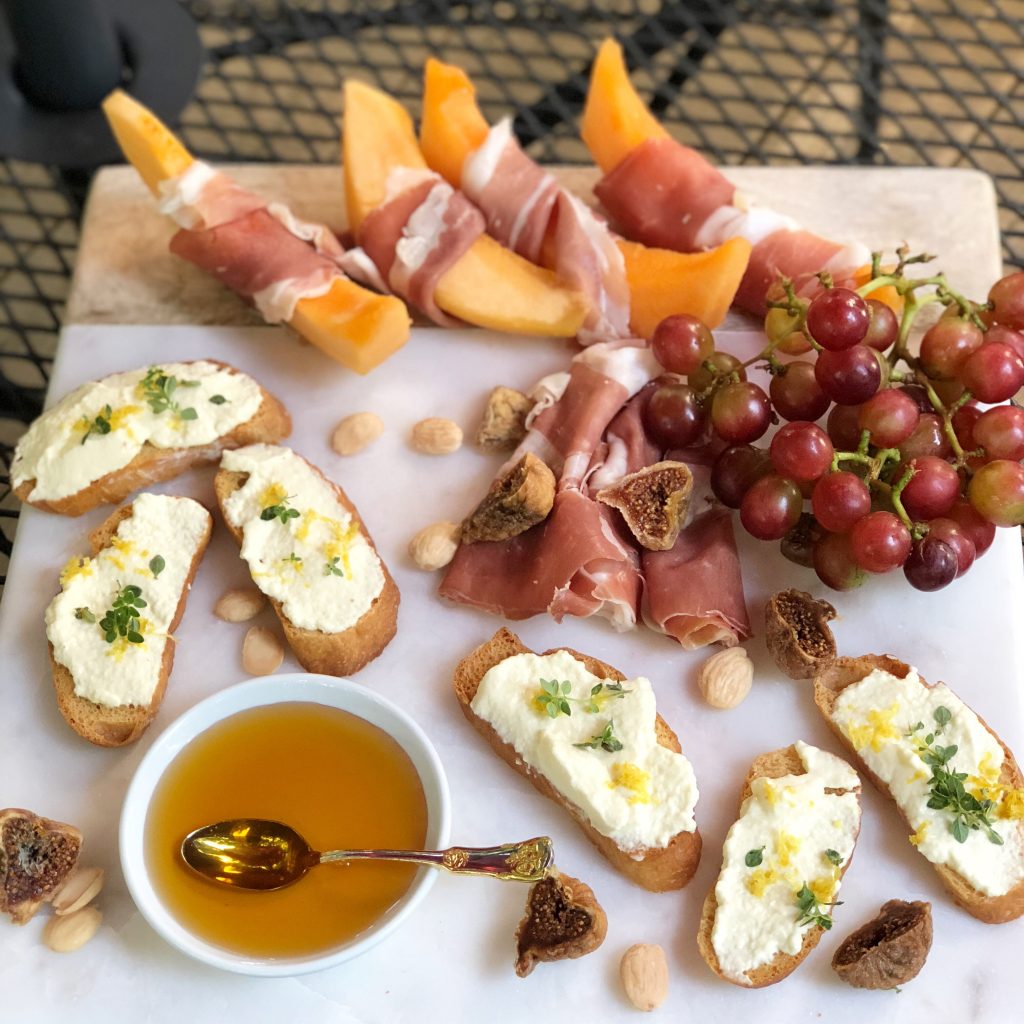
1. First pairing: Premier Cru Chablis with Susan’s creamy ricotta crostini recipe and a P’tit Basque cheese I picked up at Wegmans. Oh, my goodness that crostini was delicious, the lemon zest and raw honey made it absolutely stunning.
Pairing notes: Chablis is 100% Chardonnay grapes. I thought that a white wine with a fresh, sharp acidity and lively citrus notes would go well with the creamy ricotta. You want to balance out the fat with acidity, this is a guiding principle behind why wine and cheese go so well together. Chablis is not typically aged in oak like a lot of French chardonnays which means it has some bite and lots of life in the glass, it’s a fun wine that is perfect for summertime. This glass, when left out for about 30 minutes, mellowed out and took on a mushroom and earthy smell. Overall it was extremely well rounded.
My buying notes: This bottle was a “Premier Cru” Chablis. I could, and maybe will write a whole new post on understanding French wine labels. I will simply say this, Premier Cru Chablis is hard to find for a reasonable price, I found this one at Total Wine for $32. It has the name of the specific vineyard these grapes are from on the bottle, so it’s a really top notch expression of what that area has to offer.
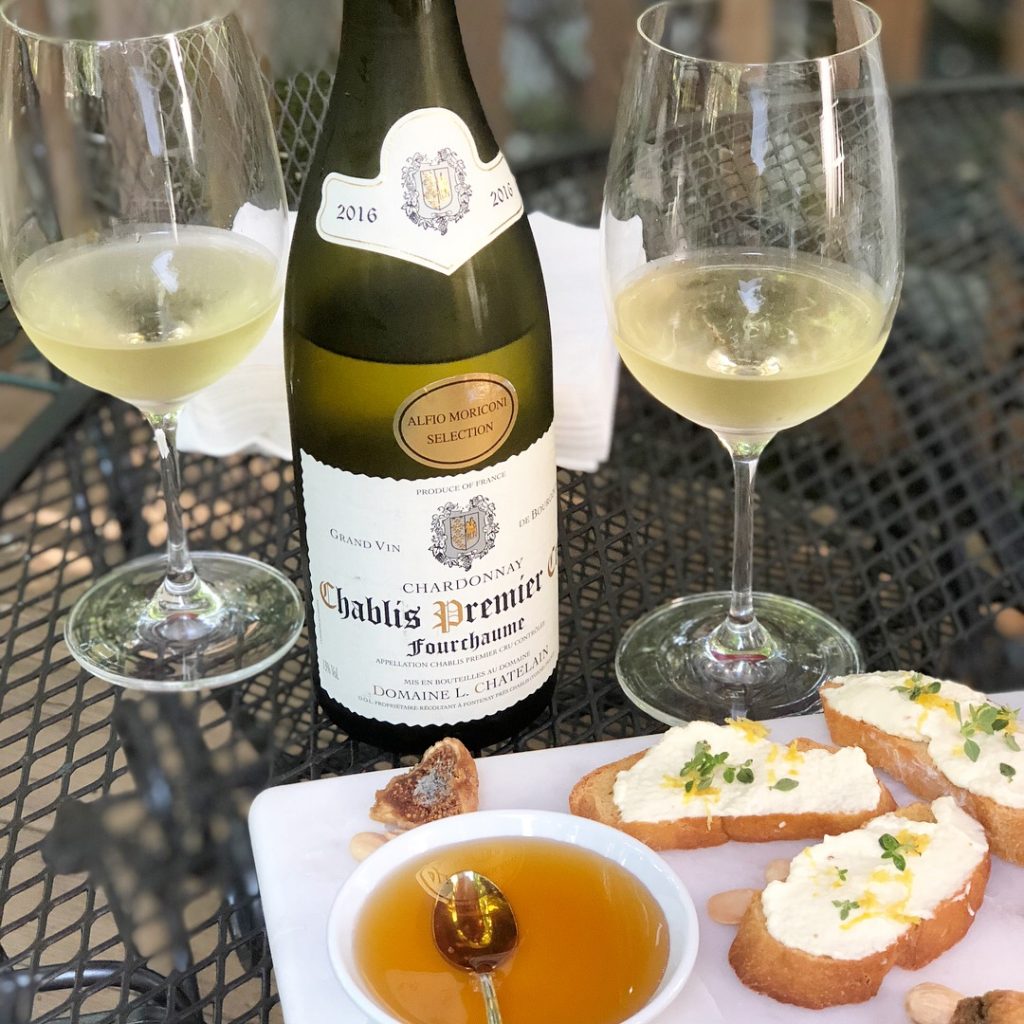
2. Second pairing. I picked up a nice Cotes de Provence rosé for us to try. We paired this with prosciutto wrapped melon and also Susan’s homemade pimento cheese. I knew this wine had the potential to go with a couple of different things we had.
Pairing Notes: Rosé already has melon notes and that complimented the melon and contrasted with the salty prosciutto. But it also went perfectly with Susan’s homemade pimento cheese. That recipe has strong, sharp cheese in it, so I wasn’t sure if it would overwhelm the rose, but it stood up nicely. Don’t be fooled by the pink color, many quality rosés pair really well with a variety of food because they are not overly fruity and have a pleasant crispness.
My buying notes: Look for Cotes de Provence rose, it’s got the perfect balance of lush fruit and a crisp dryness. It mellows out in the glass to reveal pear, peaches and melon notes. The smell was heavenly. It was light but can still work really well with creamy, sharp cheeses. I was impressed since it was only $15 at Total Wine.
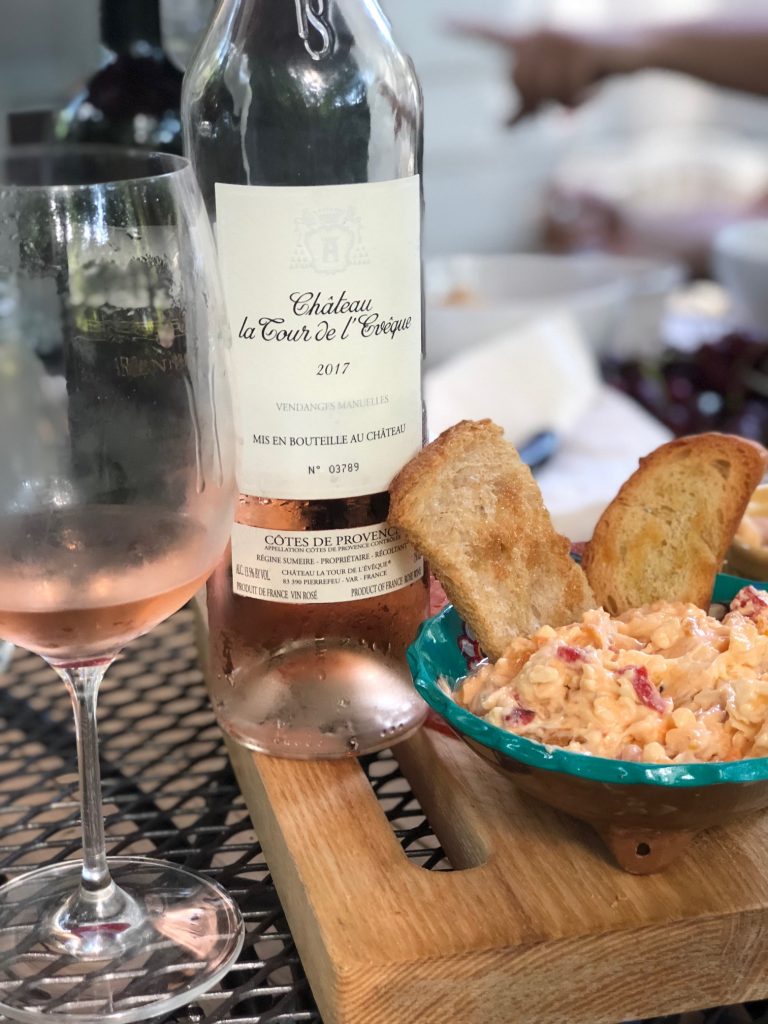
3. Third pairing: Brunello di Montalcino, one of my favorites. This wine is so good on its own but I pulled it out to pair perfectly with the charcuterie, summer sausage and manchego cheese on the plate.
Pairing Notes: We weren’t having anything as heavy as stew or steak so I knew that a Brunello, which is a medium-bodied wine, would work great with the spicy soppressata and the summer sausage. We tasted pepper, black cherry, prune and leather as we sipped on this. It’s hard for me to sum up Brunello because it’s one of those wines I just fell in love with. This bottle was special to us as well because my husband bought it for me for Mothers Day. There are few things I enjoy more than sharing a great bottle of wine with my friends.
Buying Notes: Brunello is 100% Sangiovese grapes from this one region, Montalcino, which is a hilltop town in Italy. A good rule of thumb, some of the best wines are grown in hilly regions. Because of the conditions of the soil, the weather and angle of the slopes, Montalcino is considered to be the ideal place to grow Sangiovese and it is world renowned. This bottle ran us around $50, but it was absolutely worth it to me. I consider that to be a steal honestly.
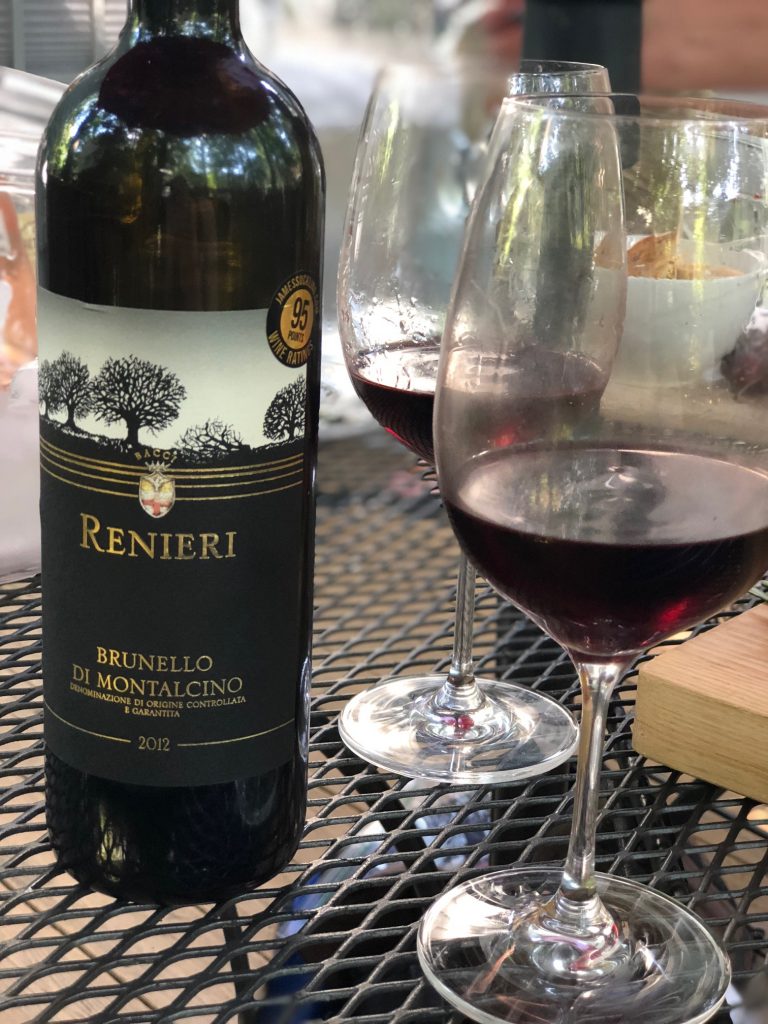
4. Last Pairing: A bottle of Nebbiolo, which is one of my current new obsessions. Nebbiolo is a grape grown in the Piedmont region of Italy, it gets its name “Nebbiola” from the fog that rolls over the hills.
Tasting notes: It’s rather light in color and highly tannic with an acidity that can just grip your teeth. But let it sit in the glass for a bit and it will reveal layers of cherry, raspberry and soft plum. It was perfection nibbling on red cherries and extra dark chocolate for dessert. Nebbiolo is one of those wines that I’ve tasted and just had to sip and sip before I got the full effect. It’s not one that you can gulp down. It’s like every sip is different.
Buying notes: This bottle was $22, you really can find a good Nebbiolo for between $20-$40 a bottle. Look for Nebbiolo d’Alba. Alba is one of the top growing towns in the Piedmont region and produces wine with a bit more softness than some other regions. It’s really a personal preference thing but I’ve enjoyed everything I’ve bought from this region.
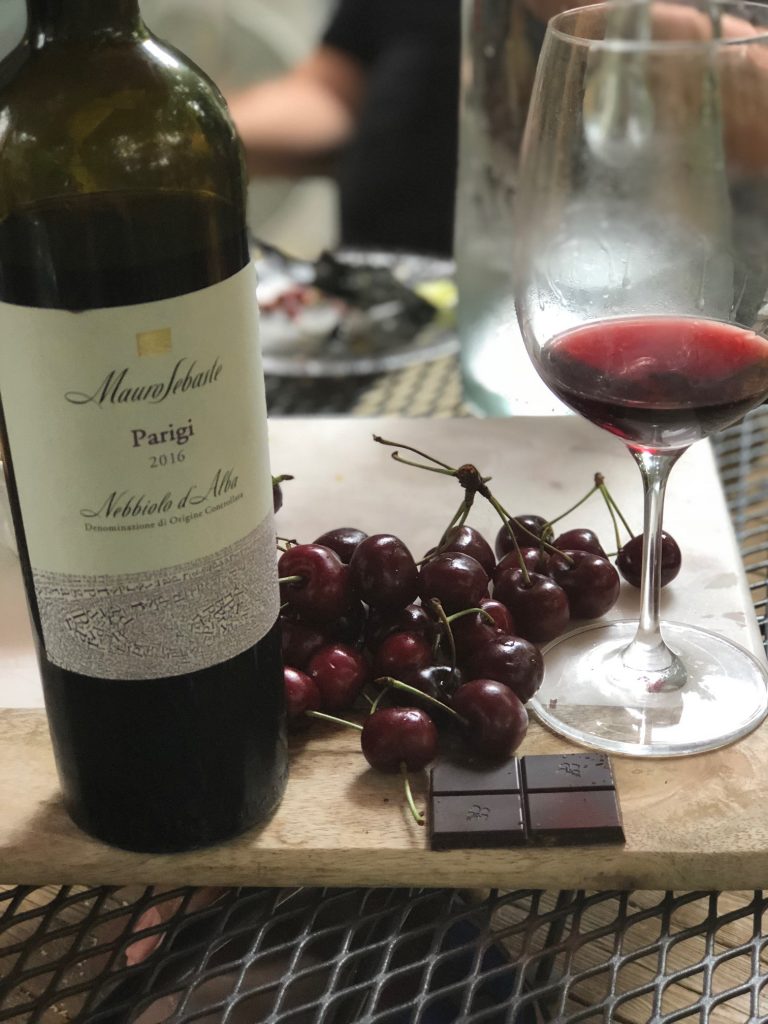
I hope this post has sparked some fascination for you about wine and introduce you to some bottles you might be interested to try!
